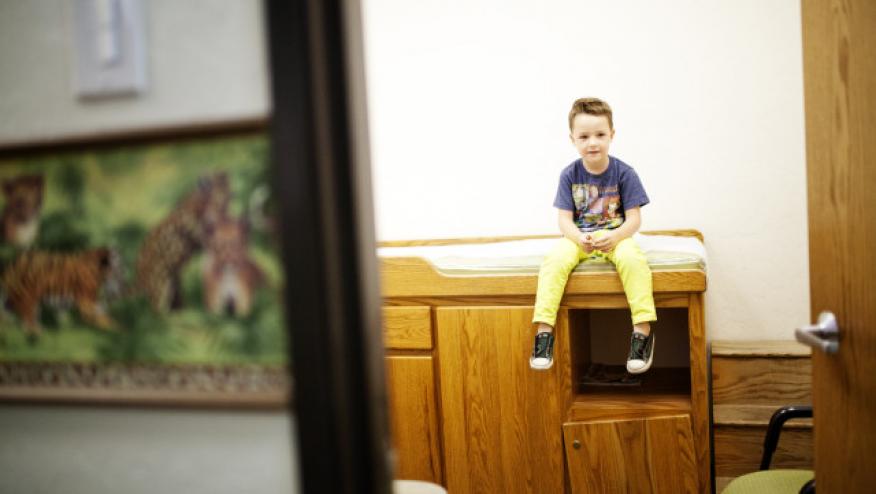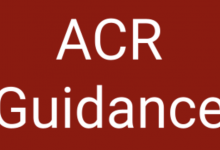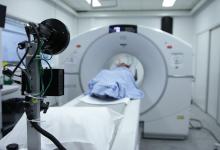ACR22 Presents New Data on JIA Clinical Remission with Combo DMARDSs Save

New research being presented this week at ACR Convergence 2022, demonstrated that polyarticular juvenile idiopathic arthritis patients were more likely to achieve clinical remission with a combination of conventional and biologic DMARDs compared with other consensus treatment plans by the Childhood Arthritis and Rheumatology Research Alliance (CARRA) (Abstract #1679).
More than half of children with juvenile idiopathic arthritis (JIA) have polyarticular JIA , which causes swelling in five or more joints. To help study the initial treatment of polyarticular JIA, CARRA developed three consensus treatment plans that differ as to when biologics are started. An ongoing prospective, observational study called Start Time Optimization of Biologic Therapy in JIA (STOP-JIA), compares the effectiveness of these plans in achieving clinically inactive disease in untreated polyarticular JIA patients. The 12-month and two-year outcomes have been published. This study reported the three-year outcomes.
The three CARRA treatment plans were:
- Step Up— methotrexate monotherapy with a biologic added after three months if needed
- Early Combination — conventional disease-modifying anti-rheumatic drug (cDMARD) and biologic (TNF, IL-6, T-cell inhibitor) started together
- Biologic First — biologic monotherapy
Data was collected from the CARRA Registry every three months for the first 12 months and every six months thereafter. The polyarticular JIA patients in this study had 3 years of follow-up (meaning a visit at 30-42 months). Out of 297 patients, 190 had started the Step Up plan, 76 Early Combination, and 31 biologic first. They were evaluated for clinically inactive disease off glucocorticoids, the clinical Juvenile Arthritis Disease Activity Score based on 10 joints (cJADAS10) inactive disease, and clinical remission (clinically inactive disease for more than six months).
At three years, there were no significant differences among the three groups in achieving clinically inactive disease and cJADAS10 ID. But both the proportion of patients who achieved clinical remission at any point in the study and the amount of time patients in each group spent in clinically inactive disease and cJDAS10 ID were significantly higher in the early combination group. For example, 67.1% of patients in the Early Combination group achieved clinical remission versus 47.3% in the Step Up group. And the percentage of time in clinical disease inactivity for Early Combination patients compared to Step Up patients was 39.2% versus 27.3%. Time in CJADAS10 ID for Early Combination patients compared to Step Up patients was 50.6% versus 37.5%.
“The STOP-JIA study shows that initial therapy and the timing of starting DMARDs and biologics is important, even three years after treatment initiation,” says Yukiko Kimura, MD, a pediatric rheumatologist and professor of pediatrics at Hackensack Meridian School of Medicine and the study’s lead author. “The results were consistent with what we saw in the analysis we did a year ago looking at two-year outcomes. However, overall, the STOP-JIA study showed that polyarticular JIA patients are not doing as well as we thought they would. The majority of patients never achieved clinically inactive disease.”
Dr. Kimura says most pediatric rheumatologists who participated in a survey prior to the start of the study expected more patients treated with biologics to do much better than they did in terms of attaining inactive disease.
“We will be continuing follow-up for this cohort for at least 10 years after enrollment, so we will continue to learn more. There has not been a study that followed a large contemporary cohort of new onset polyarticular JIA over this long period of time, so we don’t really know what the outcomes will be. It does seem likely that the patients treated with early combination will likely do better in terms of having more time with inactive disease over the long term, given what we have seen so far,” says Dr. Kimura.
STOP-JIA was an observational study, so there was no randomization. The unequal distribution of consensus treatment plans and differences in baseline activity can introduce bias, despite using statistical methods like propensity weight scoring to adjust for this, Dr. Kimura says. “There is also missing data for some outcomes, especially patient-reported outcomes data, and there were patients who either missed visits or did not continue follow-up.”
Still, Dr. Kimura says, “The study shows that early disease treatment is key to improved outcomes in polyarticular JIA, which may include the use of biologics within three months of starting treatment for some patients. However, polyarticular JIA is still a difficult disease to treat and control. There are still too many patients who continue to have active disease, even after three years, so we need more and better treatment options as well as ways to identify which patients should be treated earlier, and with which specific treatments, to achieve the best outcomes.”









If you are a health practitioner, you may Login/Register to comment.
Due to the nature of these comment forums, only health practitioners are allowed to comment at this time.